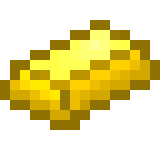In networks established through wireless technologies, objects are connected to each other by devices-transmitters and receivers, although the connection is not made directly. First, the data to be sent is first routed through a server, then some part of that data is sent to the receiver by the server of that particular network. The major use of intermediate technologies and concepts occurs in data transmission, during the transfer from the device to the server and vice versa (Liu et al., 2022). In the opinion of Abdel Hakim, Hussein and Kim (2022), the basic elements involved in any wireless technology structure are summarized in the following lines:
1.EU, user’s device – any gadget used by the user for direct exchange with the device. It can be a mobile phone, laptop or any other device equipped with a mobile broadband adapter. EUs connect to base stations (eNodeB, eNB). The user’s equipment consists of three hardware components as follows (Ericsson et al., 2021): – Mobile terminal: to manage all communication functions. – Terminal equipment: to complete (terminate) the flow of data by processing it. – Universal microchip (integrated circuit card), or SIM-card: to run the applications needed to store user data in messages.
2. Improved UMTS (Universal Mobile Technology System), i.e., UTRAN (Evolved UMTS Terrestrial Radio Access Network) – Terrestrial Radio Access Network. It is a new radio access network consisting of base stations that replaces the UMTS system of 3G mobile networks. Compared to previous technologies, it has advantages such as high-capacity traffic, low packet delay, and is optimized for data transmission rather than audio files. It is the main source of the high speeds achieved in 4G networks. EUTRAN controls and manages all radio communications between the mobile unit and the packet core of the enhanced network. In addition, EUTRAN is also an intermediate between EU and EPC (Yang et al., 2019). The received data is received by EPC while moving from one place to another at different base stations of EUTRAN.
User devices – mobile phones, notebooks, cars, drones, IoT and etc.
Base station – receiving/transmitting antenna, equipment for retransmission of radio signals and data encryption blocks.
Service server – handles signal, data packet processing and routing services.
UU – radio interface that allows communication between user devices and base stations.
X2 – interconnects base stations. These stations are interconnected by the principle of “one another”.
S1 – interconnects the subsystems in the base station with the service server.
3. Evolved packet core (EPC). EPC represents an advanced extension of the GPRS/3G network core, known as 4G. This layer covers the data packet network; that is, internal and external IP network services are based on this layer. EPC is a link between the server and EUTRAN as it provides a middle link for data transfer. It is composed of four entities which have features specific to one of them. – EPC – EUTRAN User Plane (U-Plane) Serving Gateway (SGW) – Packet Data Network Gateway (PDN GW) – External Network (Internet, IMS, and etc.) – Control Plane (C-Plane) Mobility Management Entity (MME), Home Subscriber Server HSS, Signal, Traffic – Serving Gateway (Serving GW, SGW) – Acts as a bridge for data transmitted between the base station and the PDN gateway. The SGW processes and routes the packets to the base stations. Packet Data Network Gateway (PGW) represents the function of a bridge for the purpose of transferring information between the server and the SGW. In addition, the PGW also ensures the availability of connection to the subscriber’s external network, plays a packet filtering role and performs charging. – Home Subscriber Server, or HSS; This is essentially a database of subscribers in the mobile communication network; it is relatively large and must contain information about the subscribers. – Mobility Management Entity, MME is responsible for network user mobility. This entity tracks subscriber movements as well as performs transfer operations between base stations. It mainly ensures that once a device connected to the network moves to another base station, it does not lose its connection and can operate in roaming mode (Latif et al., 2019; David, & Berndt, 2018).
4) Server Network, This is for sending data to the generally available: PDN; public data network. This data is forwarded packets between mobile stations. The transmitted data is divided into packets along the EUTRAN and delivered to the EPC server; where it can be saved.
5) PDN Server is mainly used in storing the data used as objects and in establishing the data for communication between the objects.
Read Also:
- 6G Technology
- Cell-Phone Technology
- 6G and 7G Cellular Network Technology
- 6G Cellular Network Technology
- Impact Of 5G Technology On Medical Access, Quality And Cost








Leave a Reply